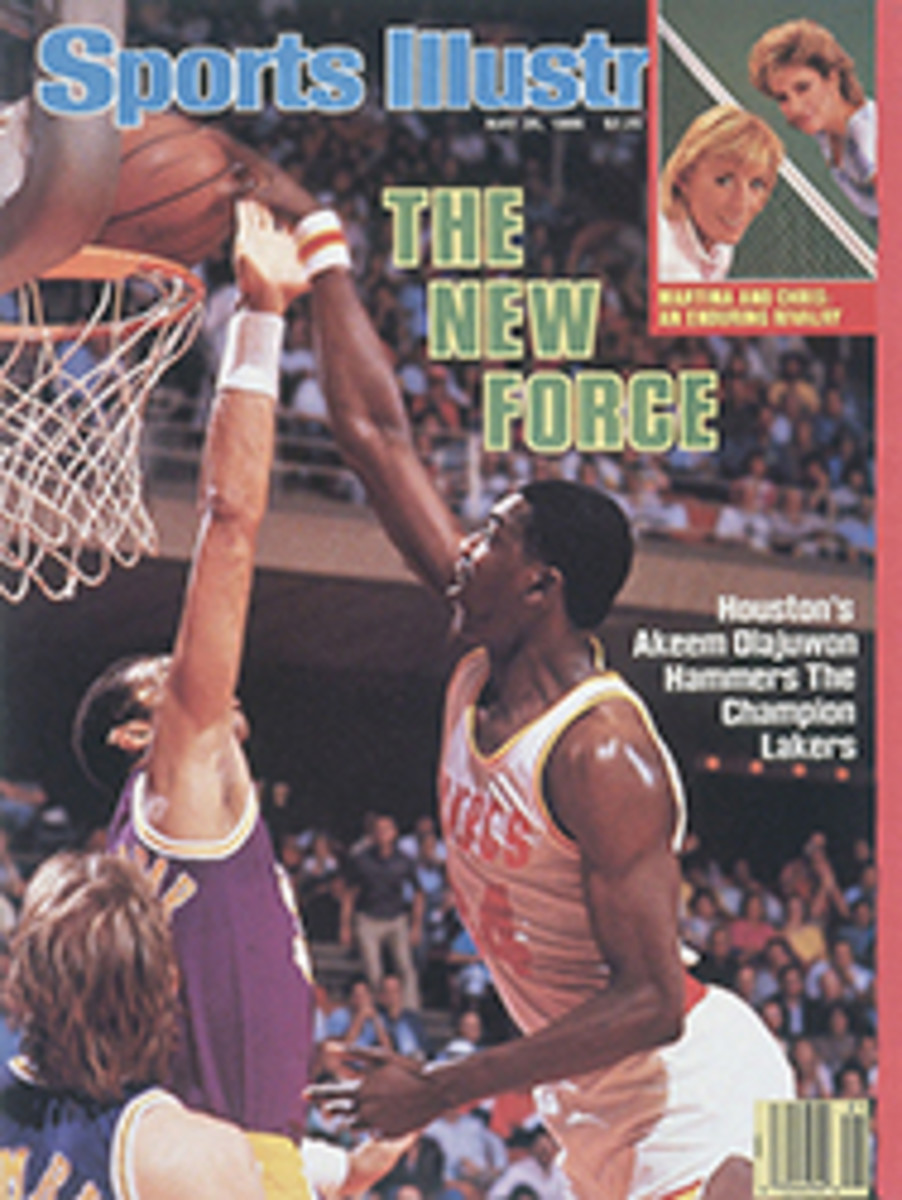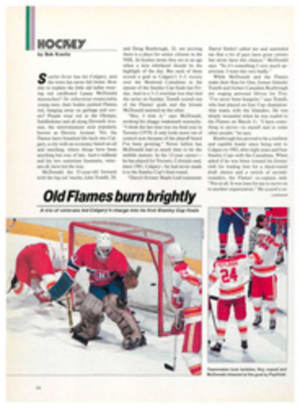
A GENUINE BASEBALL CAP TIPPED OFF A SOUTHERN LAD TO NEW YORK'S GIANTS
Back in the days before the Giants abandoned New York for San Francisco, it took true love to be one of their fans, even if you lived in New York. If you lived in Mississippi, as I did, it required even more: a capacity to endure considerable ridicule from those around you.
In Mississippi during the '40s and '50s the St. Louis Cardinals were the "home" team, and every kid who played baseball batted in the hunched-over style of Stan Musial. That was because the local radio stations, which I sometimes listened to in the after-bedtime dark, broadcast only Cardinal games. In that era, St. Louis was the nearest major league city to the Deep South. Rooting for the Cardinals was natural.
More than two years before Bobby Thomson hit his historic ninth-inning home run to win the 1951 National League playoff against the Brooklyn Dodgers, I defied local tradition and became a New York Giants fan. I did so because of John Bush Murdoch's baseball cap.
One day in the summer of 1949 when I was 11, the town of Corinth, where I had just finished the sixth grade, experienced an American Legion baseball miracle. Don Blasingame, who would go on to the majors and actually play for the Cardinals, and a slick third baseman named Gene Box led the Corinth Warriors to an upset of the awesome team from Jackson coached by Cooter Berry.
I watched the final game in a chauvinistic frenzy, whooping as the Warriors gave the Jackson pitcher an unmerciful hammering. I remember three things about that afternoon: the flushed face and neck of the tormented Jackson pitcher, his name—Red Gookin—and John Bush Murdoch's cap.
John Bush had already graduated from high school. He too was a spectator. He was wearing a genuine New York Giants baseball cap—a black wool wonder with the interlocking letters NY embroidered in orange on it. The underside of the bill was green, with white plastic material separating the wool from the tan leather sweatband. This white separator was visible in all the color photos of big leaguers in Sport magazine and was the sure tip-off that John Bush's hat was no-fooling real.
We started to talk. John Bush was a big, quiet boy with the good manners not to treat 11-year-olds like little kids. While we watched the game I learned that he was a devoted follower of Leo Durocher, then the Giants manager and, before that, the manager of the Dodgers and, before that, a feisty shortstop with the Yankees, Reds, Cardinals and Dodgers. When, in 1948, the controversial, win-at-all-costs Durocher left the Dodgers for the Giants, John Bush's loyalty changed teams, too. The Giants cap provided evidence.
"I'm a Durocher fan first and a Giants fan second," said John Bush. He tugged on the bill of his cap as he spoke. Later, he let me wear it for a while; it was too big. Nevertheless, this exposure to John Bush's cap made me a Giants fan on the spot.
My new team, I discovered, played in an odd and ancient ball park called the Polo Grounds, in which polo was never played. From this U-shaped arena the Giants could look across the Harlem River and see the concrete splendor of Yankee Stadium, where in that summer of 1949 the Yankees were in the process of winning the first of five consecutive American League pennants. The Giants, who were lumbering toward a fifth-place finish, hadn't won a pennant since 1937. All of this information I gathered from the books, magazines and newspapers that began to fill my room at 1109 Seventh St. in Corinth—a world and a thousand miles away from the Giants.
During that same summer, our family moved to Jackson and I transferred from Corinth Junior High to Bailey Junior High in Jackson. At Bailey, a chance discovery sealed my commitment to the Giants. As I was poking around in the school library in the spring of 1950, a book title arrested my attention: Batboy of the Giants by Garth Garreau. I could not believe it. After reading, out of sheer desperation, a trilogy by John Tunis about Roy Tucker, the kid from Tompkinsville who later became a Dodgers star, here was a book about my team. The elation that filled me when I happened across Garreau's book can only be understood by remembering that we had no television then, so that my only sources of Giants lore, besides the box scores in the local paper, were The Sporting News and magazines. And, of course, the radio—but only when the Giants played the Cardinals. Geography denied me the yearbooks, scorecards and other souvenir-stand memorabilia that a classmate's father or uncle was forever bringing home from Sportsman's Park in St. Louis. But now, here in my hand, lay something marvelous—a firsthand account, written by a boy from somewhere called Teaneck, N.J., of just what it was like to serve as batboy for the Giants.
Garreau's narrative of the 1947 season lofted me into raptures. By the time I read it, a number of those 1947 team members had been traded, but the breathless author—no more breathless than his reader—told story after story about such familiar people as Bobby Thomson, Clint Hartung, Larry Jansen and Bill Rigney, who were still with the club. It was wonderful.
The next year, 1951, on a gray October afternoon, Thomson, batting in the last of the ninth with two on, one out and the Giants trailing the Dodgers 4-2, hit a Ralph Branca pitch into the short leftfield stands at the Polo Grounds. My Giants, by winning the best-of-three playoff, had snatched the pennant from the hated tenants of Ebbets Field. I had made it home from school in time to hear the last few innings and was listening with thumping heart as Al Heifer broadcast the best news I had heard since the war ended.
When Thomson's homer put the Giants in the World Series, I was, for fully 10 minutes, speechless with happiness. Finally, I summoned the coordination to phone Clarence Anding. Anding, a rotund ninth-grade classmate, was a Dodgers fan—for some reason a slightly more acceptable thing to be in our crowd than a Giants fan. On Aug. 11, when the Dodgers led the Giants by 13½ games, Clarence had instituted a program of systematic verbal torture directed at me that had continued, unrelenting, until the Giants caught the Dodgers on the last day of the season, causing the playoff.
Clarence took the news—which he already knew, of course—badly. "Oh, yeah," he said, sounding like a man who has been told by the doctor that both big toes are going to have to come off. Then he hung up. The moment was as sweet as Thomson's homer itself. Even better, Clarence refused to discuss the game ever again.
The Giants lost the 1951 World Series to the Yankees, four games to two. That was all right. After their playoff miracle, I would have been greedy to expect more. Two years passed and then, in 1954, the Giants won the National League pennant and swept four consecutive games from the Cleveland Indians. For the first time since 1933, the world championship pennant flew above the Polo Grounds. By that time, I was a senior at Central High School. The school paper noted that I hoped to become a front-office executive with the New York Giants when I graduated.
Four years later, the Giants did the unthinkable: They moved to San Francisco. I knew instinctively, although I had yet to visit New York, that San Francisco was wrong for the Giants. I never bothered to learn the dimensions of Candlestick Park, but I will know forever that the distance from home plate at the Polo Grounds to the sign above the center-field clubhouse (A HIT! ALWAYS BUY CHESTERFIELD) was 483 feet.
The one thing in San Francisco that ever said "Giants" to me hangs on the wall at Perry's, a San Francisco restaurant and saloon. It is a black-and-white photograph of Sal Maglie. The Barber is standing on the mound wearing his terrible scowl, waiting for a sign from the catcher. Maglie, who pitched as if he hated every batter, never threw a single baseball for the San Francisco Giants.
For a brief time, when San Francisco and Willie Mays won the pennant in 1962, I tried to rekindle my love for the Giants, but it wasn't there. Three years later, I moved to New York and became a Mets fan.
Last fall, at a bookstore in Grosse Pointe, Mich., where I now live, I came upon a well-used copy of Batboy of the Giants. Beside it was a book I hadn't seen before, called Wait 'Til Next Year, by Christopher Jennison. I was interested, but not thrilled—not like I had been when I first found Garreau's work. For a dollar, I bought the two books.
Rereading Garreau's book—during the 1985 World Series—almost brought on the silent tears of remembrance. Looking at the photos in Jennison's book did bring them. Wait 'Til Next Year had photograph after photograph of all three New York teams of the 1947-57 decade. So, as I reread Batboy of the Giants, I could flip to pictures of Johnny Mize, Thomson, Willard Marshall, Walker Cooper, Sid Gordon, Don (Mandrake the Magician) Mueller and the rest of the Giants in Jennison's volume.
I looked with affection at two-page photos of the Polo Grounds itself, its playing field shaped like a dropped shoe box, with a deep centerfield at one end. The park has long since been erased from Coogan's Bluff and replaced by a housing project.
My discovery of the two books in Grosse Pointe led to yet another attempt at reawakening the ghosts of the Polo Grounds. After the World Series, I bought a copy of The Sporting News. For years, the company in Boston that makes caps for most of the big league teams has run an advertisement offering genuine major league caps.
The "old-timer" cap the company sent me is black wool, with interlocking orange letters that say NY. The underside of the bill is the baize of a pool-table top. Best of all, between the tan sweatband and the black wool is a piece of white plastic, so I know it's genuine.
My New York Giants cap sits on a shelf in my office closet. It is in every way a good cap, but not quite as good as John Bush Murdoch's was.
ILLUSTRATION
RICHARD ALOISIO
William Jeanes is a columnist for "Automobile Magazine" and "Detroit Monthly."

